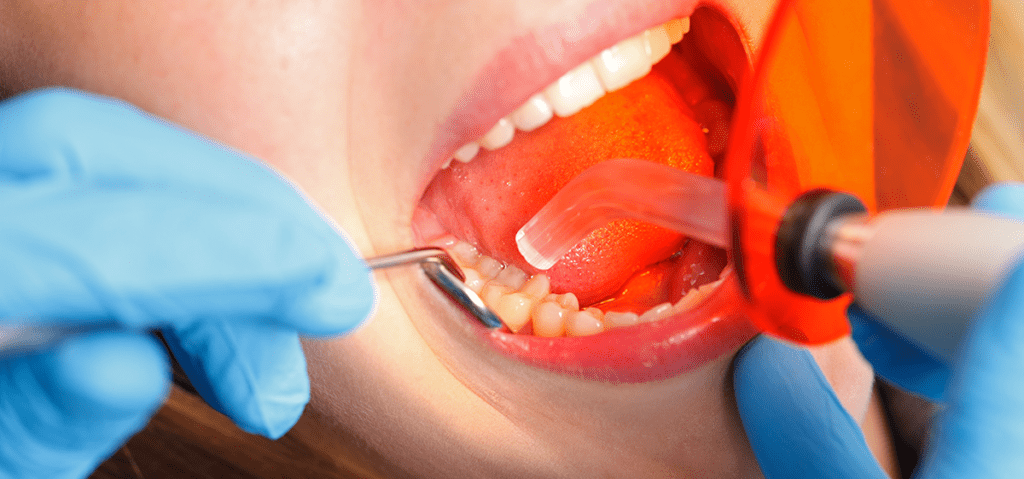
Dental bonding is a procedure that restores, reshapes and closes gaps between teeth in order to improve the function and appearance of your teeth. During the dental bonding procedure your dentist will apply a thin layer of tooth-colored plastic to the front of your tooth and sculpt it to your teeth.
Dental bonding is used for the following dental conditions:
- Repair chipped or cracked teeth
- Repair teeth that have decayed
- Improve the appearance of teeth that are stained or discolored
- Close the gaps between teeth
- Make teeth look longer
- Change the shape of teeth
- Replace a silver filling
- Protect a tooth’s exposed root
Dental bonding is an alternative to porcelain dental veneers because there is little or no reduction of your tooth’s enamel needed. The dental bonding material is made of a composite resin or plastic that hardens and then fuses to your teeth after being exposed to a special light that your dentist shines on it. After hardening, the bonding material is then shaped and matched to your natural teeth.
The Dental Bonding Procedure
Unless it is used to fill a decayed tooth, the dental bonding procedure requires no anesthesia. Your dentist will use a shade guide to match your teeth. Your teeth will be gently roughened with an etching solution that is applied to your teeth. This allows for a stronger bond between your teeth and the bonding material. A bonding resin is placed on your teeth and a special light is shined on your teeth to seal the resin in place. After hardening, the bonding material is sculpted to your teeth and colored to match the shade of your adjacent teeth. Then, the bonding material is polished until smooth.
After the Dental Bonding Procedure
Caring for your newly bonded teeth is the same as caring for your teeth. Make sure that you brush and floss your teeth regularly. Because bonding material can chip, you need to make sure that you avoid chewing on ice, hard food objects, your fingernails, or chewing on pens. If you do notice a sharp edge on your bonded teeth or if your teeth feel uncomfortable when you bite down, call your dentist to make an appointment.